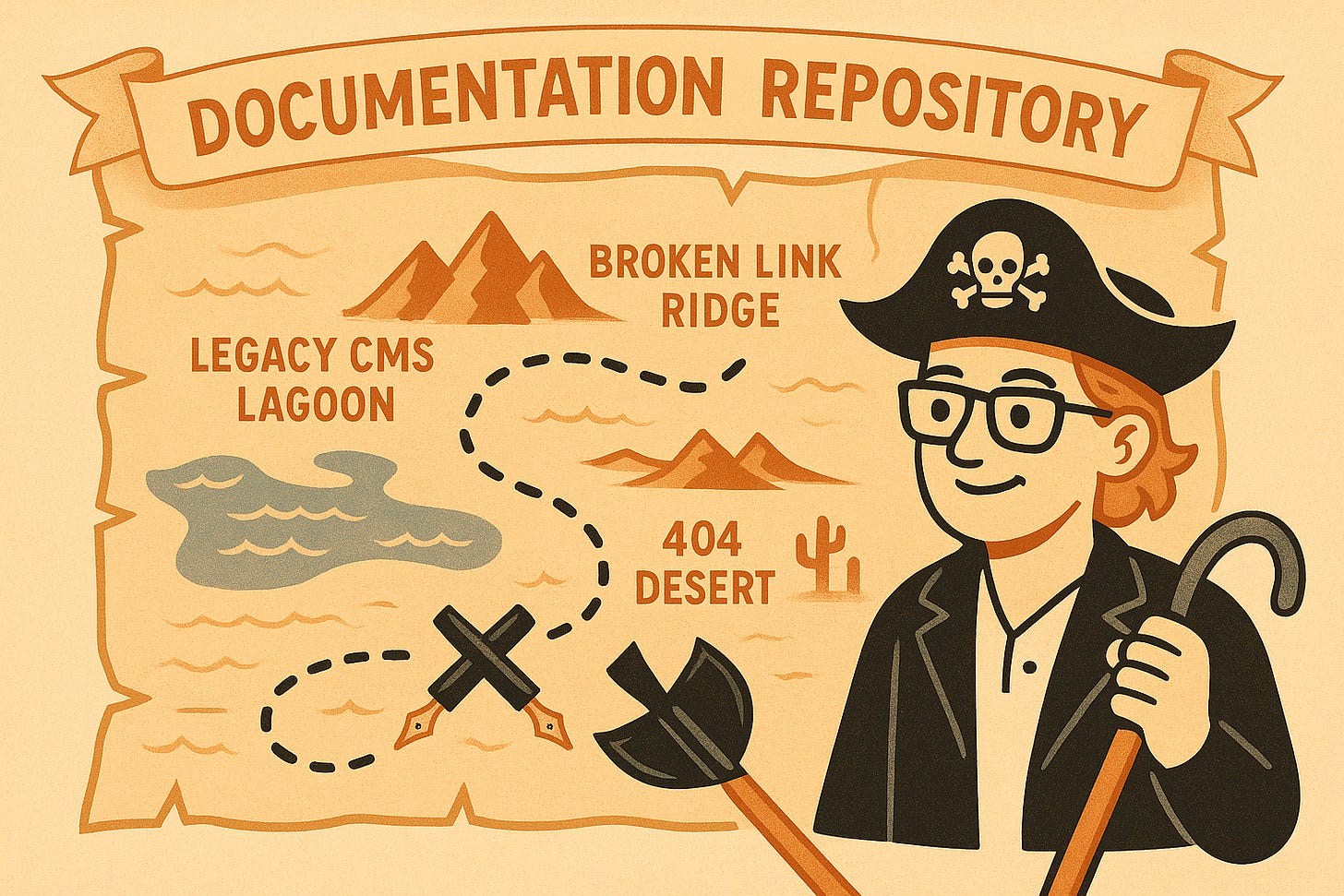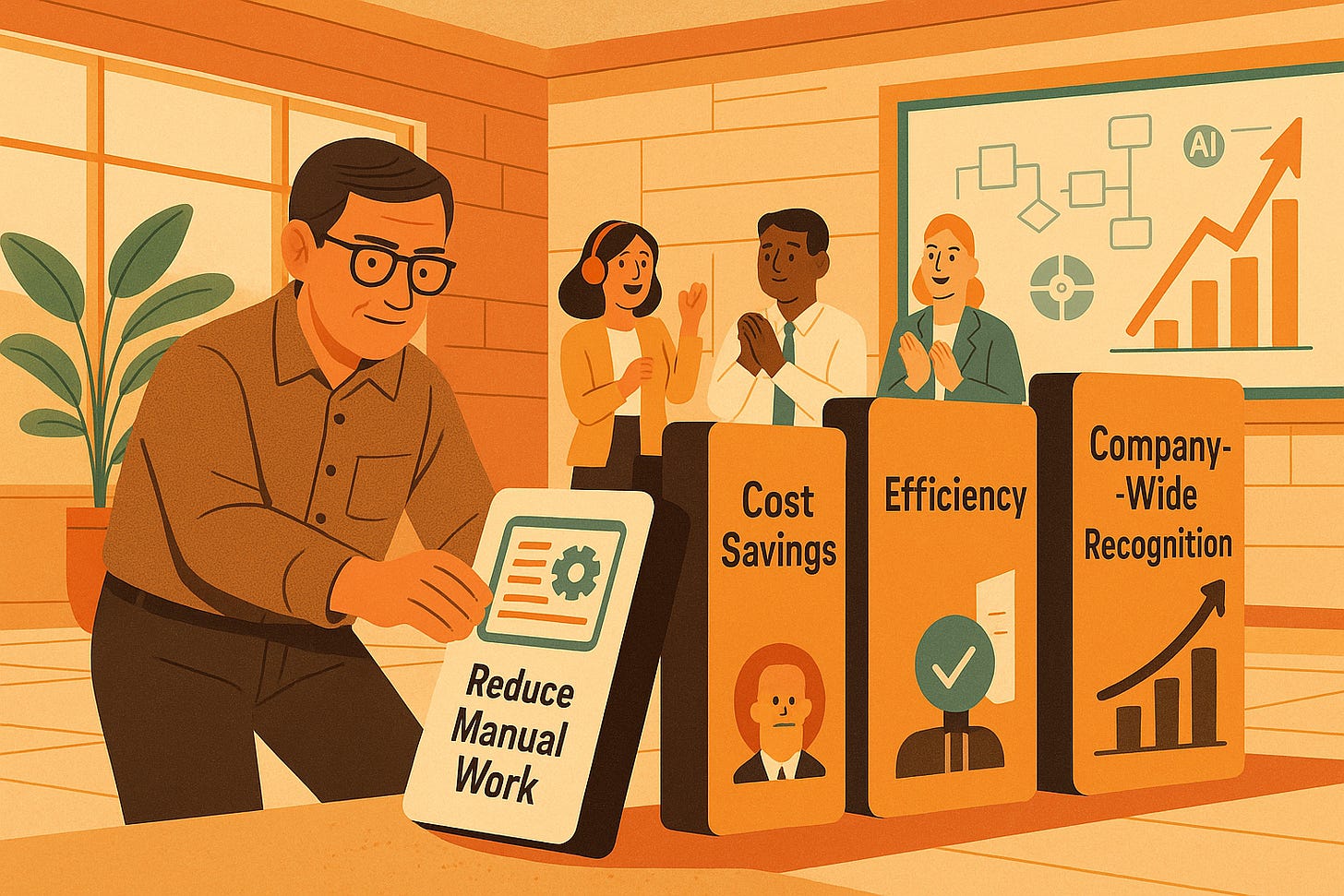Why Tech Writers Should Be the Business Case Cheerleaders for Content Projects
How to lead change without needing a fancy new title
Let’s be honest: most content improvement projects begin not with a bang but with a passive-aggressive comment in a Zoom chat.
We see the chaos. We see the ancient templates that haven’t been updated since Windows Vista. The publishing process that requires a prayer, a goat sacrifice, and five rounds of manual PDF tweaking. And we think: this is a disaster.
And yet, we smile. We nod. We click “resolve comment” and move on. Because advocating for change? That sounds exhausting. And vaguely like project management.
Here’s the truth we need to face: we’re the best people to make the business case for fixing this mess.
We know the problem. We live it. And we can connect the dots between “this doc is a hot mess” and “this is costing us real money.”
We Know Exactly Where the Content Skeletons Are Buried
Let’s not pretend otherwise. We are aware of which content exists in twelve different versions across five systems. We know which reviewers never respond unless bribed with tasty snacks. We know which parts of our publishing process involve someone manually replacing curly quotes—every single time.
And while it’s tempting to keep it to ourselves (because it makes for great group chat gossip), we are in the best position to shine a light on what’s broken. More importantly, we can explain what fixing it could save—in time, money, and human dignity.
We’re Bilingual (and One of Those Languages Is XML)
We speak human. We speak machine. Sometimes, both are in the same sentence.
We can explain to developers why their UI labels don’t make sense and then turn around and explain to execs why their chatbot is hallucinating because the source content is garbage.
This ability to translate chaos into coherent strategy? That’s a superpower. And it’s precisely what’s needed to get people to care about content problems that are otherwise invisible until something explodes (usually late in the day on a Friday).
We Can Make the Invisible Gloriously Visible
Good content is like good Wi-Fi. You only notice it when it’s not working.
So, let’s make the consequences of bad content impossible to ignore:
Repetitive support tickets about the same missing steps
Global customers waiting weeks for translated updates
Engineers explaining the same thing in Slack ‚ again and again
Then, let’s show what happens when content is supported:
Tickets drop
Launches speed up
Reviewers stop weeping
You don’t need a PhD in data science. Just tally up the hours you spend doing the same thing over and over. That’s your ROI, right there.
We Don’t Need a Title to Lead—Just a Spine
We don’t have a “Senior Vice President of Content Optimization Strategy and Global Enlightenment” in our email signatures.
But we have something better: credibility.
People trust us. They come to us to make sense of nonsense. That means we already have a seat at the table—even if it’s one of the folding chairs off to the side.
So, let’s use our credibility to pitch ideas that improve things. Let’s get bold enough to say: “Hey, if we fix this, maybe we won’t have to spend our Fridays re-exporting 14 help topics because the logo changed by one pixel.”
We Can Start Small and Still Win Big
Here’s how to begin your journey as a business case cheerleader without breaking out in hives:
✅ Identify the recurring pain. What do we complain about on Slack the most? That’s your project.
✅ Find your allies. Who else is sick of it? Support? Localization? Sales? Pull them in. Make it a movement.
✅ Tie it to something shiny. Is the company launching AI features? Expanding internationally? Link your content improvements to those significant, budget-worthy initiatives.
✅ Talk dollars and hours. “Fixing this will save us 250 hours and cut our translation costs by 30%.” No one ignores that sentence.
Let’s Fight For Better Content
If we don’t fight for better content, who will?
Carl from Accounting? Please.
We are the ones with the receipts. The ones who know how bad it is and how good it could be.
So, let’s stop whispering about our content woes and start waving the flag. Let’s turn our frustration into action. Let’s write the kind of business case that makes a VP say, “Wait—we’re not already doing this?”
Because we’re not just writers.
We’re advocates.
We’re translators.
We’re professional dot-connectors.
And honestly? We’re kind of tired of doing the same workaround for the 100th time. 🤠








